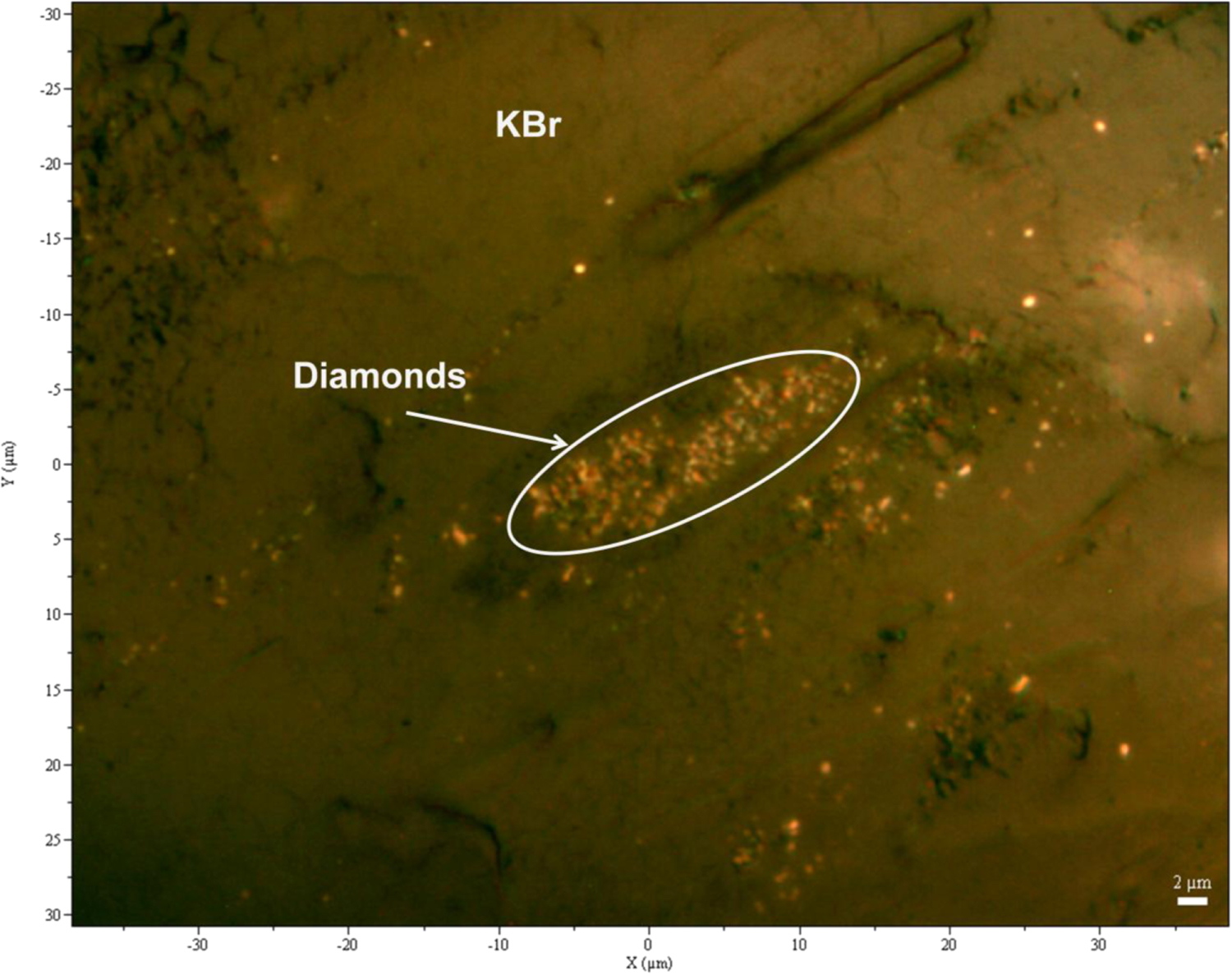Infrared Spectroscopy of Carbonaceous-chondrite Inclusions in the Kapoeta Meteorite: Discovery of Nanodiamonds with New Spectral Features and Astrophysical Implications
Yassir A. Abdu, Frank C. Hawthorne, and Maria E. Varela
The Astrophysical Journal Letters, Volume 856, Number 1
“We report the finding of nanodiamonds, coexisting with amorphous carbon, in carbonaceous-chondrite (CC) material from the Kapoeta achondritic meteorite by Fourier-transform infrared (FTIR) spectroscopy and micro-Raman spectroscopy. In the C–H stretching region (3100–2600 cm−1), the FTIR spectrum of the Kapoeta CC material (KBr pellet) shows bands attributable to aliphatic CH2 and CH3 groups, and is very similar to IR spectra of organic matter in carbonaceous chondrites and the diffuse interstellar medium. Nanodiamonds, as evidenced by micro-Raman spectroscopy, were found in a dark region (~400 μm in size) in the KBr pellet. Micro-FTIR spectra collected from this region are dramatically different from the KBr-pellet spectrum, and their C–H stretching region is dominated by a strong and broad absorption band centered at ~2886 cm−1 (3.47 μm), very similar to that observed in IR absorption spectra of hydrocarbon dust in dense interstellar clouds. Micro-FTIR spectroscopy also indicates the presence of an aldehyde and a nitrile, and both of the molecules are ubiquitous in dense interstellar clouds. In addition, IR peaks in the 1500–800 cm−1 region are also observed, which may be attributed to different levels of nitrogen aggregation in diamonds. This is the first evidence for the presence of the 3.47 μm interstellar IR band in meteorites. Our results further support the assignment of this band to tertiary CH groups on the surfaces of nanodiamonds. The presence of the above interstellar bands and the absence of shock features in the Kapoeta nanodiamonds, as indicated by Raman spectroscopy, suggest formation by a nebular-condensation process similar to chemical-vapor deposition.”

A cluster of nanodiamonds in the Kapoeta meteorite. Photo: from Yassir A. Abdu et al 2018 ApJL 856 L9
































